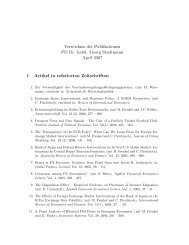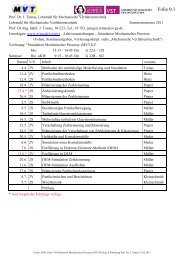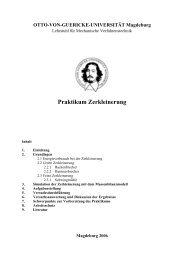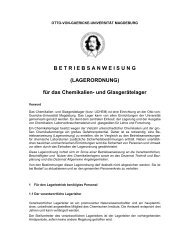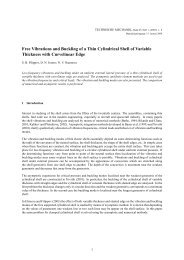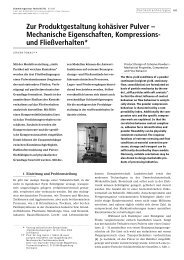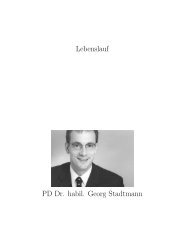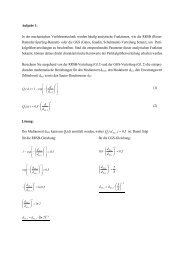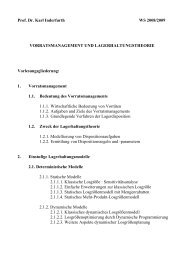Mechanics of nanoparticle adhesion â A continuum approach
Mechanics of nanoparticle adhesion â A continuum approach
Mechanics of nanoparticle adhesion â A continuum approach
Create successful ePaper yourself
Turn your PDF publications into a flip-book with our unique Google optimized e-Paper software.
<strong>Mechanics</strong> <strong>of</strong> <strong>nanoparticle</strong> <strong>adhesion</strong> — A <strong>continuum</strong> <strong>approach</strong> 35( )F = F + κ ⋅ F + FHA(1) , , H0 N H0( F F ) 3⋅ +2 F − F N H0HA(0) , , H0−π⋅r⋅κ⋅p⋅ ⋅ 1+12 , p f2 *2⋅⋅ + r E12 , F FN H0 2/3(79)This unloading point U is stored in the memory <strong>of</strong> the contact as preconsolidationhistory. This general non-linear <strong>adhesion</strong> model (dashed curve inFig. 8) implies the dimensionless, elastic-plastic contact consolidation coefficientκ and, additionally, the influence <strong>of</strong> <strong>adhesion</strong>, stiffness, average particle radiusr 1,2 , average modulus <strong>of</strong> elasticity E * in the last term <strong>of</strong> the equation. The slope <strong>of</strong>the <strong>adhesion</strong> force is reduced with increasing radius <strong>of</strong> surface curvature r 1,2 .Generally, the linearised <strong>adhesion</strong> force (Eq. (72)) is used first to demonstratecomfortably the correlation between the <strong>adhesion</strong> forces <strong>of</strong> microscopic particlesand the macroscopic stresses in powders [91, 146, 147]. Additionally, one can obtaina direct correlation between the micromechanical elastic-plastic particle contactconsolidation and the macro-mechanical powder flowability expressed by thesemi-empirical flow function ff c according to Jenike [4].It should be pointed out here that the <strong>adhesion</strong> force level in Fig. 8 is approximately10 5 –10 6 times the particle weight for fine and very cohesive particles. Thismeans, in other words, that one has to apply these large values as acceleration ratiosa/g with respect to gravity to separate these pre-consolidated contacts or toremove mechanically such adhered particles from surfaces.For a moist particle packing, the liquid-bridge-bonding forces caused by capillarypressure <strong>of</strong> interstitial pores and surface tension contribution <strong>of</strong> the free liquidsurface additionally determine the strength [118–122]. Attraction by capillarypressure and increasing van der Waals forces by contact flattening due to normalload (application <strong>of</strong> an external pressure) are also acting in particle contacts <strong>of</strong>compressed water-saturated filter cakes or wet-mass powders [91, 144, 145, 150].2.4. Energy absorption in a contact with dissipative behaviorIf one assumes a single elastic–plastic particle contact as a conservative mechanicalsystem without heat dissipation, the energy absorption equals the lens-shapedarea between the unloading and reloading curves from point U to A as shown inFig. 3:hK,Udiss N,reload K K N,unload K KhhK,AhK,UW = F ( h ) d h − F ( h ) dh (80)from Eqs. (64), (67) for F H,A and (65), (58) for F N,U , one obtains finally:K,A



